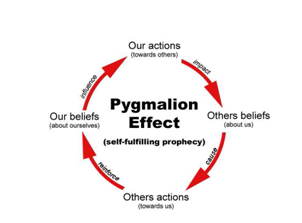VALUE ATTRIBUTION: 5 CENTS AND 10 CENTS
WRITTEN BY: JOEY NG
Value Attribution: 5 cents and 10 cents
An Article by Joey Ng
Date of Review: 3/4/2010
‘No men are equal’
No men are equal because humans are different. No two roles in a team are equal because they are different. Difference leads to comparison and comparison results in order. When working in teams, order is classified by the importance (perceived or not) of the role. The value we give to a person or role reflects the importance of it. Let’s say 10 cents is more important, 5 cents less. Labeling values in team can allow a team to better allocate resources. For example, the role of a CEO is highly valued, and it will be rewarded as such. How much we label a person determines how we perceive and judge him. When we judge, we not only judge the person, but everything about the person, for example, competency, works and information. Because of this, if we are fixated with the value we attribute to 10 cents, they will always be perceived as more right then 5 cents, even if that is not the case.
Fixation is the child of Diagnoses Bias. Commitment further cements fixation.

When our mind is fixed on certain perceptions, we erect walls, blinders against any facts or information that is not aligned with our mental model. Some psychiatrists call this putting up of blinders Diagnose Bias. Diagnose Bias
occurs when we label someone and form a perception that closes off any avenue to see who the person really is. Once a label is diagnosed, it is hard for people to see the person in any other light. Add commitment into the mix, it becomes even harder.
The more we commit into someone, the higher the value we place on him, the stronger the blinders will hold. Commitment requires investing of resources. Because of the effort and time we have invested to make someone a 10 cents, we will put on blinder if the person’s action or words are not aligned with our perception. The alignment is placed not against the person per se, but also, the resources we have invested in him.
Assigning someone a label or value will affect the way we perceive him, and how we perceive an individual will determine how we work with them. ‘You are what you think you are’ is based on how we align our thoughts and actions towards the mental picture we paint of ourselves. On the same notion, ‘You are what OTHERS think you are’ happens when we take on characteristics ascribe to us. This mirroring of expectation is know as the Pygmalion effect and the Golden effect (taking on traits assigned by someone else) in the psychological circle.

Put Diagnose Bias and Commitment together, it could result in a cocktail of serious misjudgment. Now, think about it – if someone is misjudged and labeled as a “5 cent”, he is treated like one and takes on traits of a “5 cent”. It might make him a lesser person just because of someone’s misjudgment.
Assigning values happens all the time, whether it is differentiating roles in a team, or comparing oneself against another. Assigning values facilitates decision making process. However, a combination of arbitrary assignment and fixation could result if dire consequences. The key when attributing someone a value is to stay open to changes. Just like how the value of currency will fluctuate, so to, will our 5 cents and 10 cents. So, watch how loosely you give that ‘change’.


